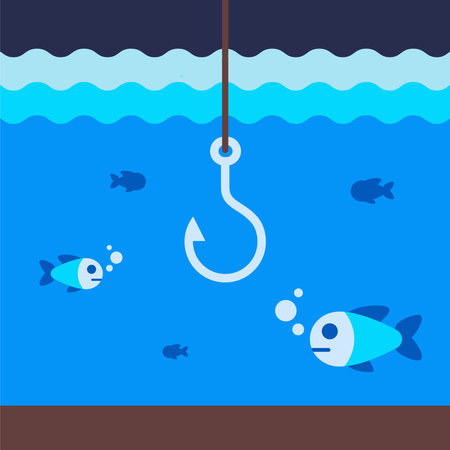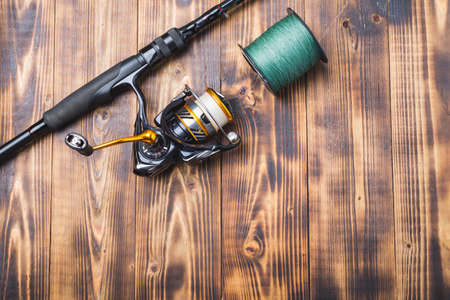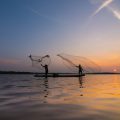Introduction: The Allure of DIY Spinnerbaits
If you’ve spent any time on an American bass lake, you know that spinnerbaits are as classic as apple pie and pickup trucks. With their flashing blades and pulsing skirts, these lures have earned a loyal spot in tackle boxes from the deep South to the Pacific Northwest. But beyond just tying one on, there’s a special kind of satisfaction that comes from crafting your own spinnerbait—choosing each blade, wire, and skirt to match your vision or the quirks of your favorite fishing hole. Building your own lures isn’t just about saving money or customizing performance (though those are definite perks); it’s a hands-on way to connect with the sport, adding a unique, personal touch to every cast. Whether you’re chasing that tournament-winning largemouth or just enjoying a quiet afternoon by the water, there’s something deeply rewarding about catching fish on a lure you made yourself. In this series, we’ll take a closer look at what makes spinnerbaits so effective for American bass fishing—and why rolling up your sleeves for some DIY lure building is well worth the effort.
2. Selecting the Right Blades: Shape, Size, and Finish
If you want to build a spinnerbait that really hooks fish—and not just weeds—then blade selection is where your DIY journey gets interesting. There’s a whole world of options out there, and understanding the differences between blade types can make or break your day on the water. Let’s break down the basics and get you set up for success.
Blade Shapes: Colorado vs. Willow vs. Indiana
Blades come in several shapes, each with its own “personality” in the water. Here’s a quick rundown:
| Blade Type | Main Features | Best For |
|---|---|---|
| Colorado | Wide, rounded; lots of thump and vibration | Muddy/stained water, low light, cold temps |
| Willow Leaf | Narrow, long; flashes more than it thumps | Clear water, pressured fish, mimics baitfish |
| Indiana | Between Colorado and Willow; moderate flash & vibration | Versatile, good all-around choice |
Tips for Choosing Blade Shape:
- Muddy or dark water? Go with Colorado blades—they create more commotion and help bass hone in by feel.
- Clear water or finicky fish? Willow blades offer a subtle approach and plenty of visual flash.
- If you’re unsure or want versatility? Indiana blades strike a nice balance between vibration and flash.
Blade Size: Matching Conditions and Target Species
Bigger isn’t always better when it comes to spinnerbait blades. The size affects both the lure’s action and how deeply it will run. Here are some general guidelines:
- Larger blades (Size 5+): Slow down retrieve, increase lift and thump—great for shallow, murky waters or when bass are sluggish.
- Smaller blades (Size 1-4): Faster retrieves, less lift—ideal for clear water or active fish chasing small forage.
Quick Reference: Blade Size by Water Condition
| Water Condition | Recommended Blade Size(s) |
|---|---|
| Muddy/Low Light/Cold | Larger (5-7) |
| Clear/Pressured/High Sunlight | Smaller (1-4) |
| Moderate Stain/General Use | Medium (3-5) |
The Importance of Blade Finish: Flash & Color Choices
This is where local know-how pays off! Chrome or nickel finishes throw off tons of flash and are killer in clear lakes or sunny conditions. Gold blades tend to excel in stained water or under overcast skies. Painted blades—think chartreuse, white, or even fire tiger—can trigger strikes when bass need something bold to grab their attention.
Tackle Tip:
- If you’re building a box of homemade spinnerbaits, mix up your finishes so you have options no matter what the lake throws at you.
Selecting the right combination of blade shape, size, and finish isn’t just about looks—it’s about reading the water and dialing in what triggers fish on any given day. Get creative, test different combos, and let the fish tell you what works best!

3. Wire Forms: Backbone of Your Spinnerbait
If you’ve ever held a store-bought spinnerbait, you know that the wire frame is the heart and soul of the lure. In DIY spinnerbait construction, picking the right wire form is where both art and science meet. Let’s break down what makes a great spinnerbait frame—whether you’re chasing chunky pond largemouth or feisty river smallies.
Choosing the Right Wire Gauge
Start by choosing your wire gauge wisely. Thicker wire (like .040″) offers durability and holds up to big bass and heavy cover, but it can mute some of the blade’s vibration. On the flip side, thinner wire (.028″ to .032″) gives off more vibration—great for calling in aggressive fish—but might not survive a tussle with a trophy fish or snags in dense cover. Many American DIY anglers settle on .035″ as the sweet spot, balancing sensitivity and strength for most situations.
Bend Styles: More Than Just a Shape
The bends in your spinnerbait aren’t just for looks—they dictate how your bait runs and how easy it is to swap out blades or skirts. The classic “R-bend” is popular for its simplicity and strong hook-holding ability, while a closed loop (or twist eye) can help keep your line from slipping out during an epic fight. Some folks even experiment with unique angles or double bends to fine-tune their presentation.
How to Shape Your Spinnerbait Frame
Shaping your own frames at home takes a bit of practice, but it’s worth it. Use a high-quality wire bending tool or even needle-nose pliers for smaller gauges. Always make smooth, gradual bends—sharp kinks can weaken the wire. Test each frame by giving it a gentle flex; it should feel springy but not flimsy, able to stand up to repeated casts and sudden strikes.
Pro Tip for American Waters
If you’re targeting river smallmouths, consider a slightly stiffer frame for better control in current. For weedy Midwest ponds or Southern reservoirs loaded with vegetation, a lighter gauge will help maximize vibration and entice those lazy bucketmouths lurking below the pads.
Getting your wire forms dialed in means you’re halfway to building spinnerbaits that not only look custom but fish like a dream on any water near home.
4. Skirts and Trailers: Customizing Colors and Textures
When it comes to spinnerbait fishing, the skirt is more than just a flashy accessory—its a big part of what makes your lure stand out in American waters. Whether you’re chasing largemouth bass in southern lakes or smallmouth up north, mixing and matching skirt materials can be a game-changer. Let’s break down the most popular skirt options and how each one brings something unique to your DIY builds.
Popular Skirt Materials for Spinnerbaits
| Material | Main Features | Best For |
|---|---|---|
| Silicone | Wide range of colors, durable, easy to layer | Clear or stained water, year-round use |
| Rubber | Softer movement, classic “old-school” feel | Muddy water, cold water, slow presentations |
| Bucktail | Natural appearance, subtle action, absorbs scent well | Cautious fish, colder months, finesse situations |
Customizing Colors for Local Conditions
The right color combo can mean the difference between a slow day and a full livewell. In the South, chartreuse and white are go-to options for stained water; in clear northern lakes, natural shades like green pumpkin or brown often work best. Don’t be afraid to experiment—sometimes adding just a hint of red or orange can mimic injured baitfish and trigger reaction strikes.
Mixing Skirts for Maximum Appeal
Layering silicone with strands of rubber or incorporating a bit of bucktail adds depth and texture that savvy bass haven’t seen before. Try using a base layer of silicone for flash, then topping it off with rubber for bulk or bucktail for realism. The extra texture not only looks great but also creates more vibration underwater—an often overlooked trigger.
Add Trailers to Change Action and Profile
No spinnerbait is complete without considering the trailer. Soft plastic grubs or split-tail trailers add bulk and modify the action, letting you fine-tune your presentation for everything from slow-rolling through heavy cover to burning it across open flats. Experiment with different shapes and sizes until you find the perfect match for your home waters.
5. Assembly Workshop: Step-by-Step Build Guide
Ready to roll up your sleeves and get hands-on? Building your own spinnerbait at home isn’t just satisfying—it’s a real game-changer for customizing your fishing experience. Here’s how you can assemble a killer spinnerbait at your workbench, no fancy tools or workshop required.
Gather Your Essentials
You’ll need your chosen wire form, blades, split rings, swivels, beads (for spacing and flash), a skirt collar, and your favorite skirt material. Basic pliers and wire cutters from any hardware store will do the trick.
Step 1: Shape the Wire Form
If you’re starting with straight wire, use pliers to bend it into the classic “R-bend” or looped eye shape. One end will hold the blades; the other will be for tying on your line. Don’t stress if it’s not perfect—the bass sure won’t mind.
Step 2: Blade Assembly
Slide on your beads and spacers first, then attach the blade(s) using a swivel and split ring. For double-blade rigs, put them in order of size—larger closer to the head, smaller trailing behind. Secure everything tightly so nothing slips off mid-cast.
Step 3: Attach the Skirt Collar & Skirt
Slip the skirt collar over the hook shank and seat it right behind the spinnerbait head. Fluff out your silicone or rubber skirt strands for max action in the water. Feeling creative? Mix colors or add some flash strands for that extra pop.
Step 4: Final Touches & Quality Check
Squeeze all connections with pliers to make sure nothing’s loose. Give it a few test spins by hand—the blades should whirl freely without getting hung up. If something looks off, tweak until everything feels smooth.
Pro Tip:
If you want to level-up, personalize your creation with painted heads or custom blade finishes. A little nail polish goes a long way!
That’s it—your homemade spinnerbait is ready to fish! Not only did you build it yourself, but you also tailored it for local waters and personal style. Now get out there and see what bites!
6. Fine-Tuning and Field Testing Your Spinnerbait
After crafting your own spinnerbaits, the real adventure starts on the water. Tweaking your homemade lures can make all the difference when you’re chasing bass in American lakes and rivers. Here’s how to dial in your creations for maximum bite—and keep track of what really works.
Tips for On-the-Water Adjustments
Bring a small tackle kit with pliers, extra blades, skirts, and split rings whenever you head out. Try swapping blade sizes or shapes to see how vibration and flash affect fish activity. Don’t be afraid to trim skirts or bend wire arms for subtle changes in action. Sometimes just shortening the skirt a half inch or widening the wire form slightly can trigger more strikes.
Reading Fish Responses
Pay close attention to how bass react. Are they swiping at the lure but missing? Try a trailer hook or slow down your retrieve. If they seem uninterested, switch up blade color or style—Colorado blades for thump in stained water, willow blades for flash in clear lakes. Observing their behavior is key: even where you get follows or short strikes tells you what adjustments might help.
Logging Your Successes (and Near Misses)
Keep a fishing journal, either old-school with pen and paper or using an app on your phone. Note details like water clarity, weather, time of day, spinnerbait setup, and fish reactions. Over time, patterns will emerge about which tweaks work best for your home waters—whether it’s a chartreuse skirt on cloudy days or gold blades after rain. This log becomes your secret sauce for building even better baits season after season.
Field testing is where homemade spinnerbaits truly come to life. With some experimentation and careful note-taking, you’ll discover what makes local fish tick—and develop custom lures that outperform anything off the shelf.

